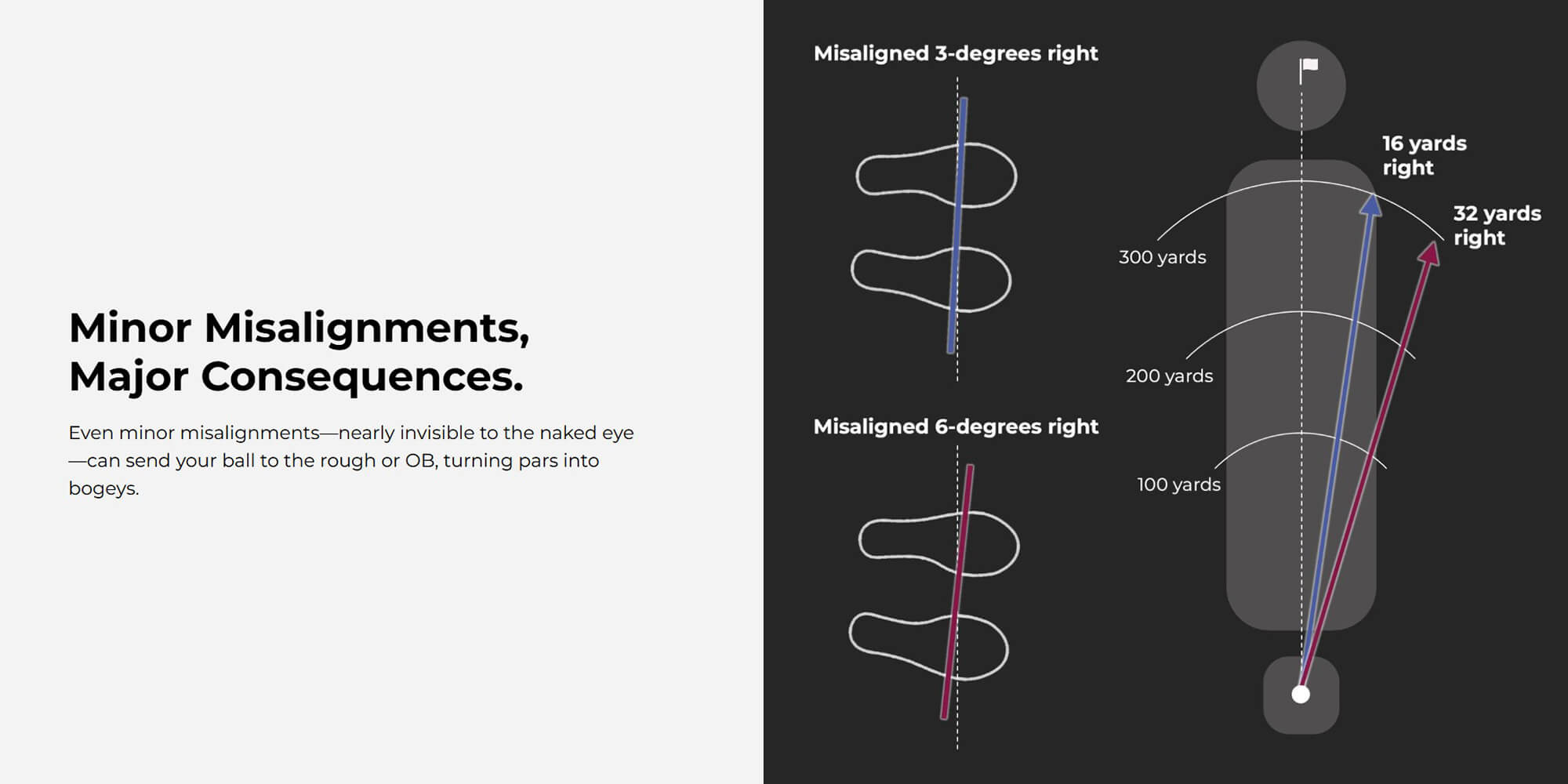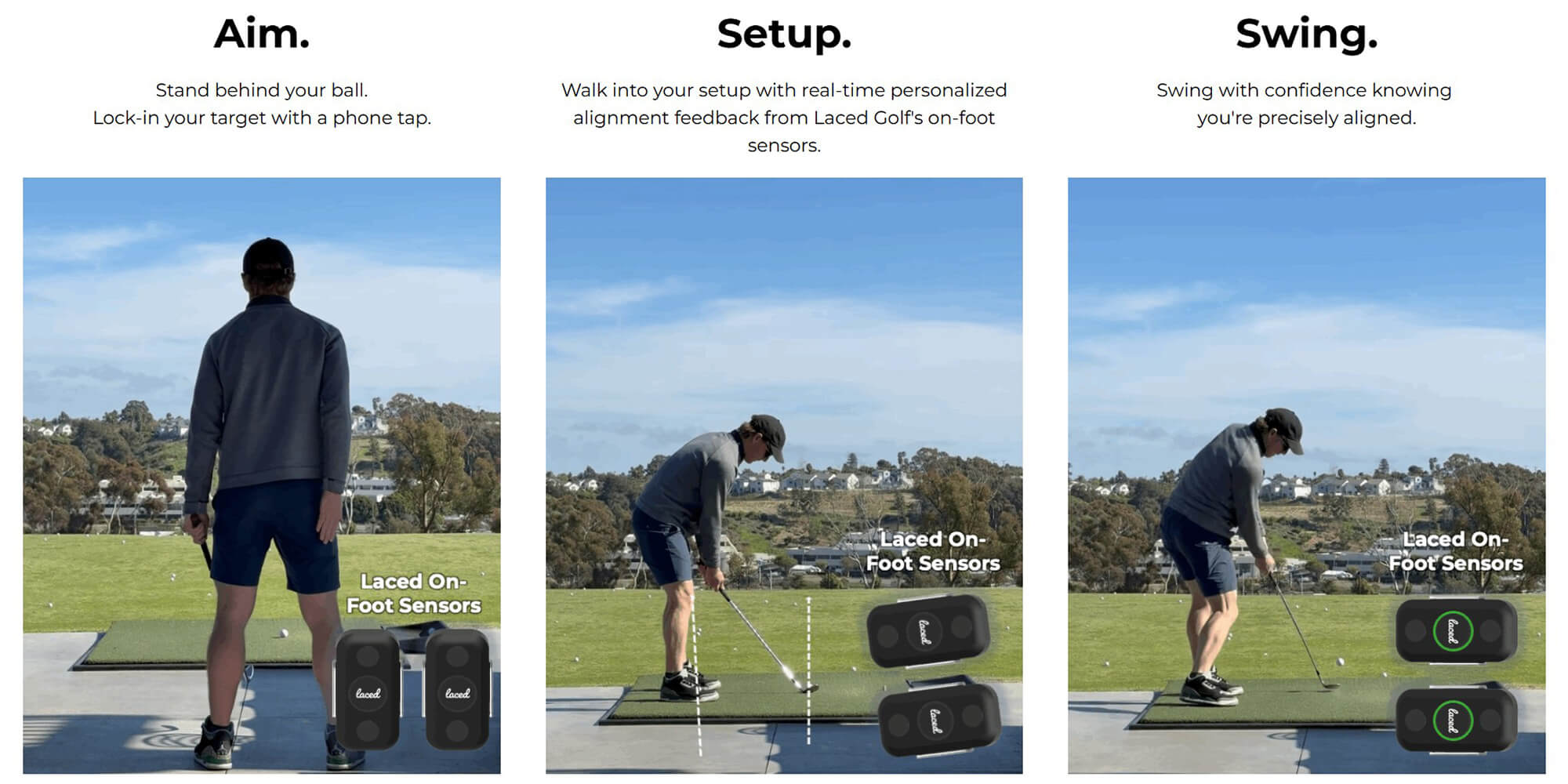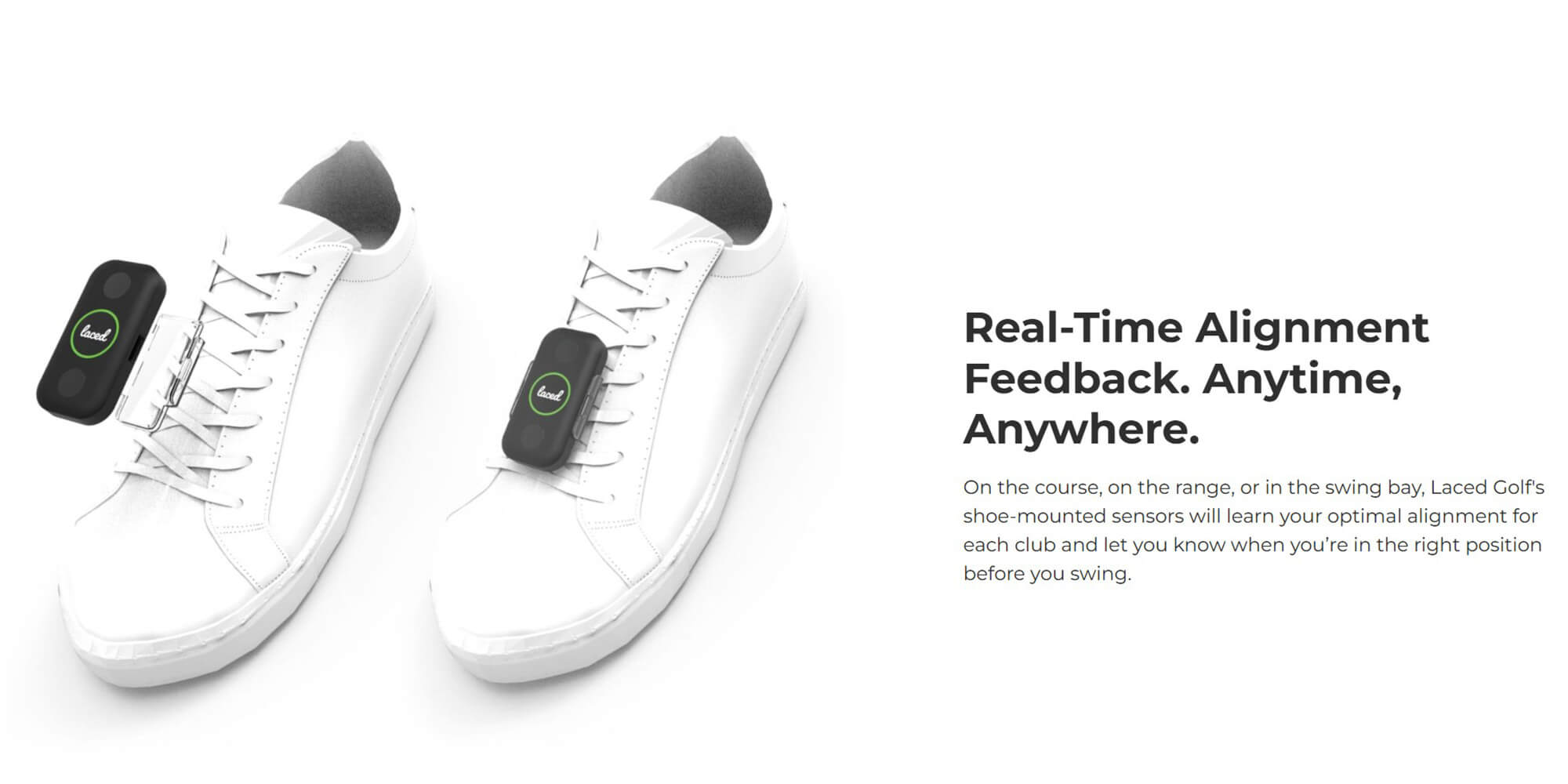A yet-to-be-released training aid called Laced Golf popped up in my Facebook feed the other day and it got me thinking.
Golf really has gone digital. You’ve probably noticed.
Launch monitors dissect every aspect of your swing. Shot-tracking systems like Shot Scope and Arccos catalog your every move on the course. Training aids like The Stack System promise to add 20 yards to your drive, Hack Motion analyzes your wrist position, and Sportsbox AI breaks down your swing using nothing more than your phone’s camera.
We measure ball speed, attack angle, face-to-path, spin rates and a dozen other metrics that didn’t exist in most golfers’ vocabularies a decade ago. We’ve got sensors, algorithms and apps for damn near everything.
But, somehow, in all this technological advancement, we’ve largely ignored one of golf’s most fundamental elements: alignment.
Think about it. You can spend thousands on a launch monitor that tells you your clubface was 1.2 degrees open at impact, but when it comes to making sure you’re actually aimed where you think you’re aimed? We’re still sticking two driveway stakes in the ground and calling it a day.
Because that’s what they are, right? Alignment sticks are literally driveway reflectors with a 200- to 300-percent markup. The same orange fiberglass stakes your neighbor uses to mark his driveway in winter somehow become “professional training aids” the moment they show up in a golf shop.
Enter Laced Golf
That’s where a company called Laced Golf thinks it can help. They’re developing what might be the first truly digital approach to alignment training—shoe-mounted sensors that provide real-time feedback on your setup position.
The concept is straightforward enough. Attach sensors to your shoes, lock in your target with a phone tap, and the Laced Golf app provides personalized alignment feedback as you walk into your setup. Over time, the system learns your optimal alignment for every club in your bag, accounting for things like your natural shot shape and preferred ball position.

Play a fade with your driver? The system learns your precise optimal alignment for that club and shot shape, down to the degree. Need to set up differently for a 7-iron versus a wedge? Laced Golf claims it will figure that out, too.
The idea isn’t entirely without precedent. We’ve seen foot pressure sensors, balance training aids and even some early attempts at digital alignment tools. What’s different here is the promise of a system that learns and adapts to your specific needs rather than applying one-size-fits-all solutions.
Why alignment matters (and why we’re bad at it)
Here’s the thing about alignment: it’s deceptively simple and frustratingly difficult.
Most golfers think they’re aimed at their target when they’re actually pointed several degrees offline. Even minor misalignments—the kind that are nearly invisible to the naked eye—can turn pars into bogeys. Miss your target by a few degrees with a driver and you’re in the rough or worse.
The irony is that alignment might be the easiest fundamental to fix if you could just see what you’re doing wrong. But without feedback, most of us keep practicing the same mistakes over and over.

The bigger picture
Laced Golf represents something bigger than just another training aid. It’s part of golf’s ongoing transformation from a sport that relied heavily on feel and intuition to one increasingly driven by data and precision.
Ten years ago, if you wanted to know if your driver face was open at impact, you needed access to a tour-level fitting facility. Today, you can get that information from a $500 launch monitor or even a smartphone app.
The same democratization of data that has transformed how we think about club fitting, ball selection and swing mechanics is coming for alignment. Whether that’s good or bad depends on your perspective, but it’s happening either way.

Questions remain
Of course, there are plenty of questions about how this will work in practice. How accurate are the sensors? How long does the battery last? Will the system work on different types of courses and terrain? And, perhaps most importantly, will golfers actually use it consistently enough to see improvement?
There’s also the matter of price, which Laced Golf hasn’t revealed yet. If the system costs more than a few lessons with a good instructor, the value proposition becomes questionable for most recreational golfers.
But here’s the fundamental question: Does one of golf’s most basic skills really need to go digital?
Would you be interested in a system that could help you find your ideal setup position with each club and give you real-time feedback on your alignment? Or do you think some aspects of the game are better left to feel and tradition?
In a sport that’s increasingly embracing new technology to solve old problems, alignment might be the last frontier. The question is whether we actually need to cross it.
Laced Golf is currently in development. Stay tuned to see what comes of it.
The post Laced Golf: Golf’s Digital Revolution Is Coming for Alignment appeared first on MyGolfSpy.
